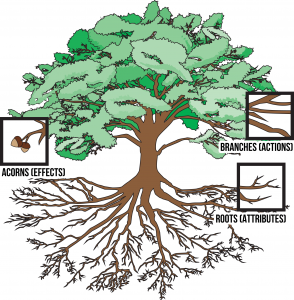Innovation by Design
Register for a live webinar series led by Darin Eich, Ph.D. Darin is author of Root Down & Branch Out: Best Practices For Leadership Development Programs, which brings key findings to practice from research conducted to determine the most important characteristics of high-impact leadership development programs.
Register Now!
Part 1: Developing & Launching Innovative Ideas

In this live 1-1.5 hour long webinar led by global innovation & education expert Darin Eich, Ph.D., we will guide you through three modules to help you become a more effective innovator. We will demystify innovation and walk you through a simple step-by-step innovation system that helps you to generate, develop, and launch innovative ideas. You can harness the innovation skills within you and others to begin working on a challenge that will help you and your organization advance to the next level.
Learning Objectives:
- Create an Innovation Vision.
- Think critically about challenges that must be addressed.
- Break down your challenge into parts by deconstructing it.
- Reconstruct your challenge.
Part 2: Program Design for Learning, Development & Engagement
 Do you want to design programs that have a greater impact on student learning and leadership development? Do you want to cultivate leadership skills in your students? Do you want to innovate the way you educate in a more high impact way?
Do you want to design programs that have a greater impact on student learning and leadership development? Do you want to cultivate leadership skills in your students? Do you want to innovate the way you educate in a more high impact way?
What contributes most to student learning and leadership development, and how can you design your program, course, or educational experience better? Here is what we’ve got planned for the event, but do email me if you have ideas or things you would like to learn.
Learning Objectives:
- Understand what it means to “root down & branch out” to improve your leadership development efforts.
- Zero in on the leadership skills most important in 2012 and hear a personal story.
- See examples of the innovative blended programs we have been launching at Dartmouth, Wisconsin, and in secondary education with USA TODAY.
- Be guided through, assess, and root down into the best practices for leadership development programs.
Part 3: Hybrid or Blended Online Programs

Hybrid or blended learning programs are an investment worthy of a serious look for leaders at universities. “Hybrid” or “blended” learning programs combine live, personal interactive elements with synchronous online elements. Using these programs, institutions can both be effective with their budget and make a unique contribution to student learning and development. New programs may help your institution to innovate at a crucial time and be an example others at your school can point to as they build the next generation of high impact learning courses or programs.
Educational problems and opportunities are everywhere. A Columbia University Research Center recently found that “students in hybrid classes — those that blended online instruction with a face-to-face component — performed as well academically as those in traditional classes.” It is important to note that hybrid programs are not traditional “seat in a desk” classroom programs. Nor are they “only look at a screen” online programs. They combine the best elements of each.
Learning Objectives:
- Tap experts in new and efficient ways.
- Become more engaging to more students.
- Take advantage of students’ downtime, allowing them to participate the way they want.
- Use blended programs to scale with ease.
Part 4: Facilitation for Engaging Group Sessions

How do you get everyone in a group catalyzed to engage in activities, share, discuss, learn, and develop? Learn tips, tools, and techniques for facilitation and engage yourself in many different activities in this fast past experiential session. You will be able to participate as well as facilitate your own rapid prototype micro-session in this workshop. How do you get the activity started quickly and guide the flow? How do you engage all of the voices to share equally? Innovate the way you facilitate and experience techniques for rapidly engaging a group in this workshop.
Learning Objectives:
- Identify facilitation outcomes they seek to achieve.
- Identify and learn tools, tips, and techniques to address these desired outcomes.
- Build and practice with a toolkit of simple and effective facilitation tools.